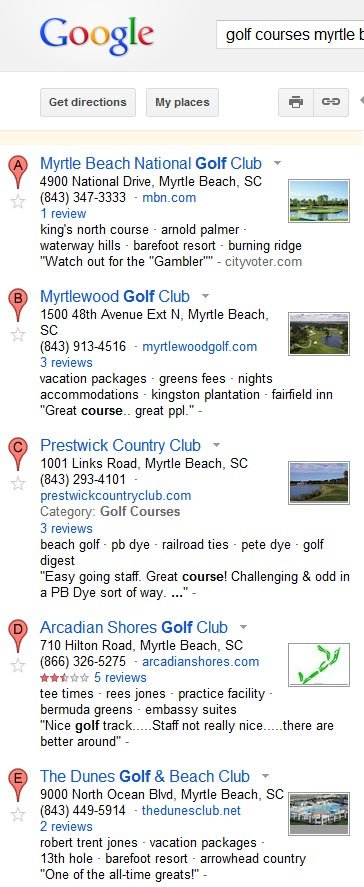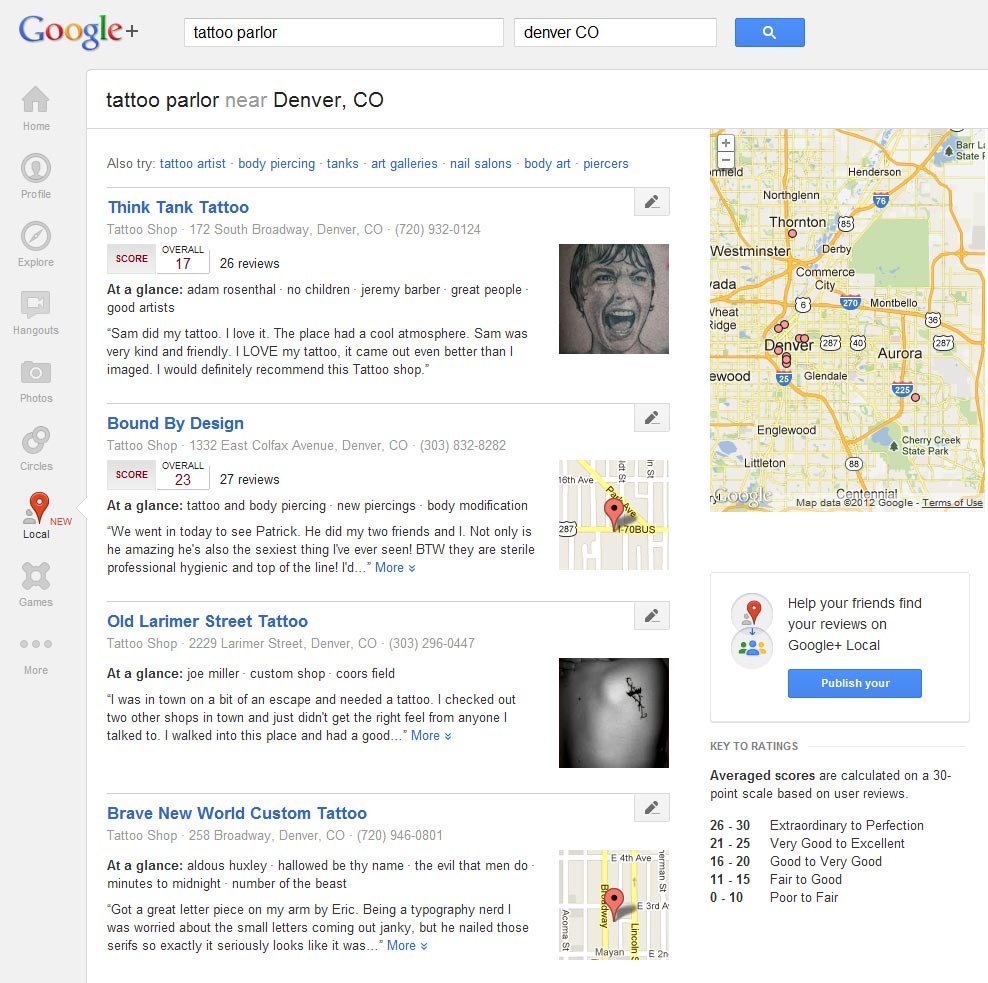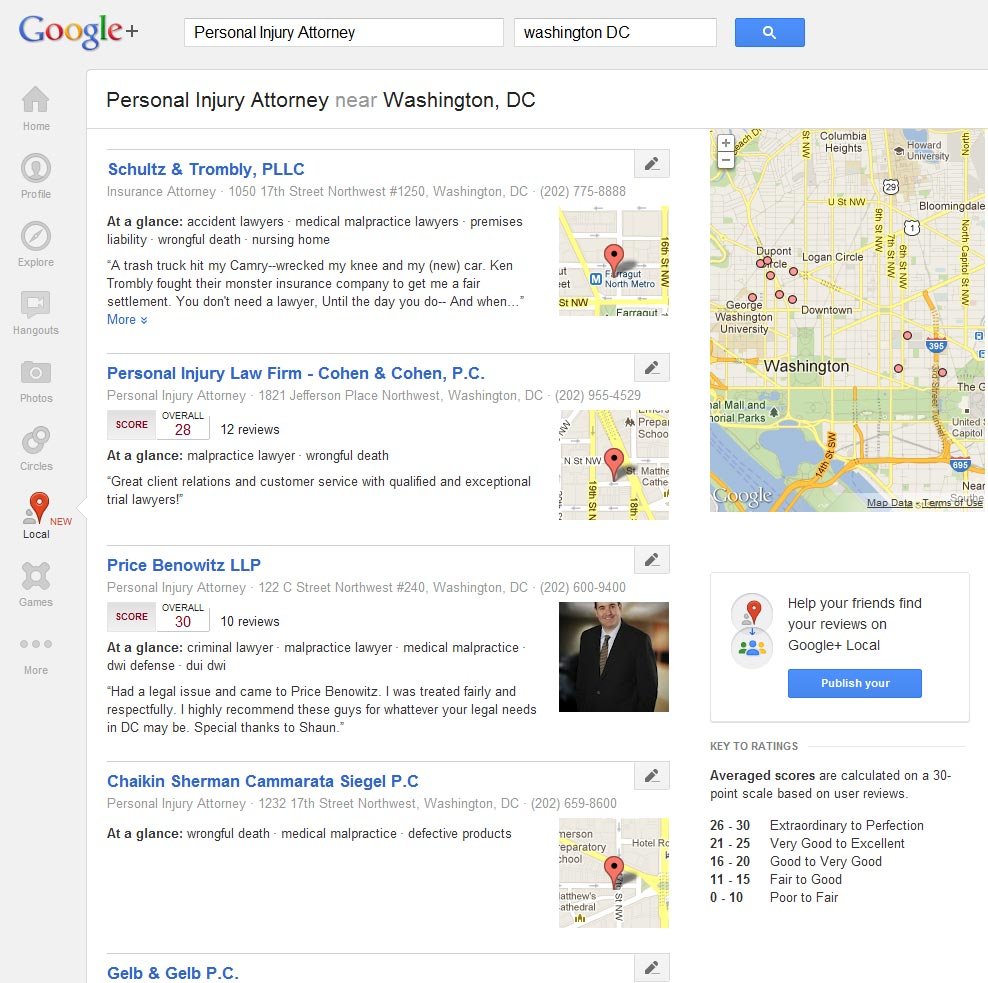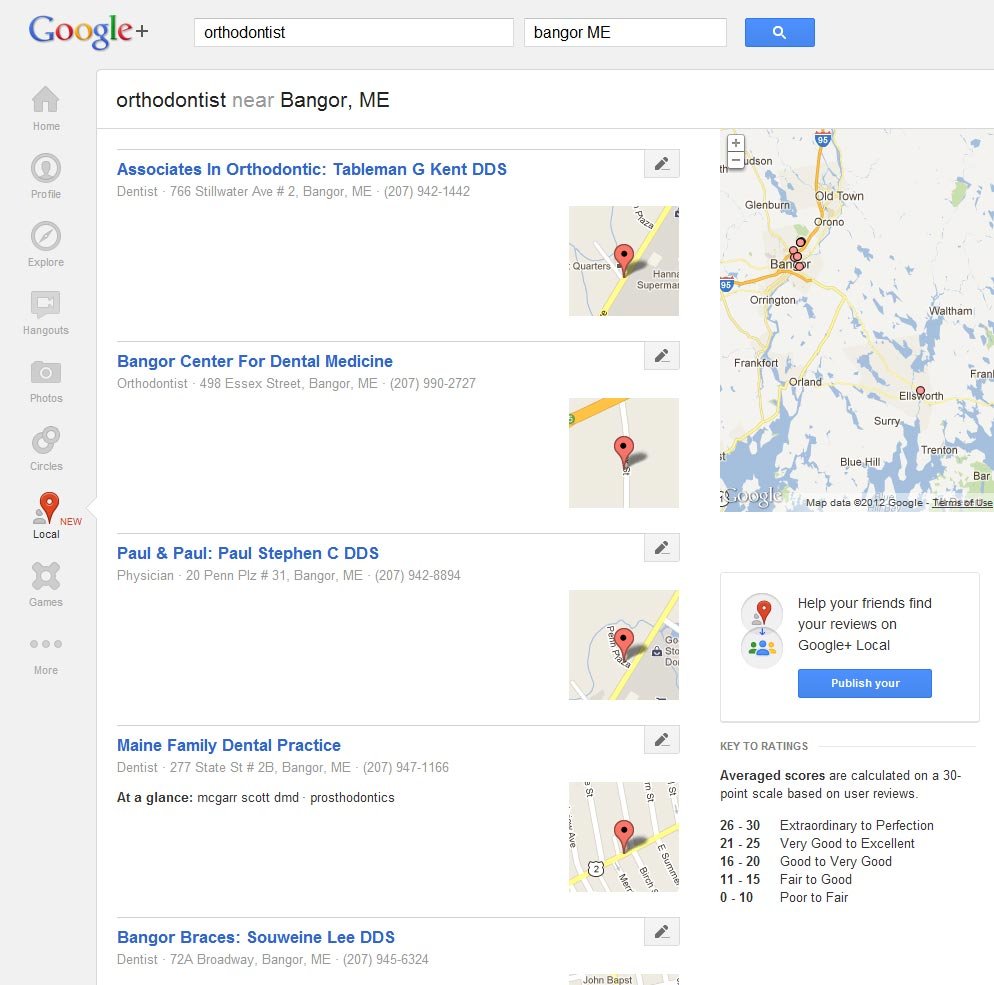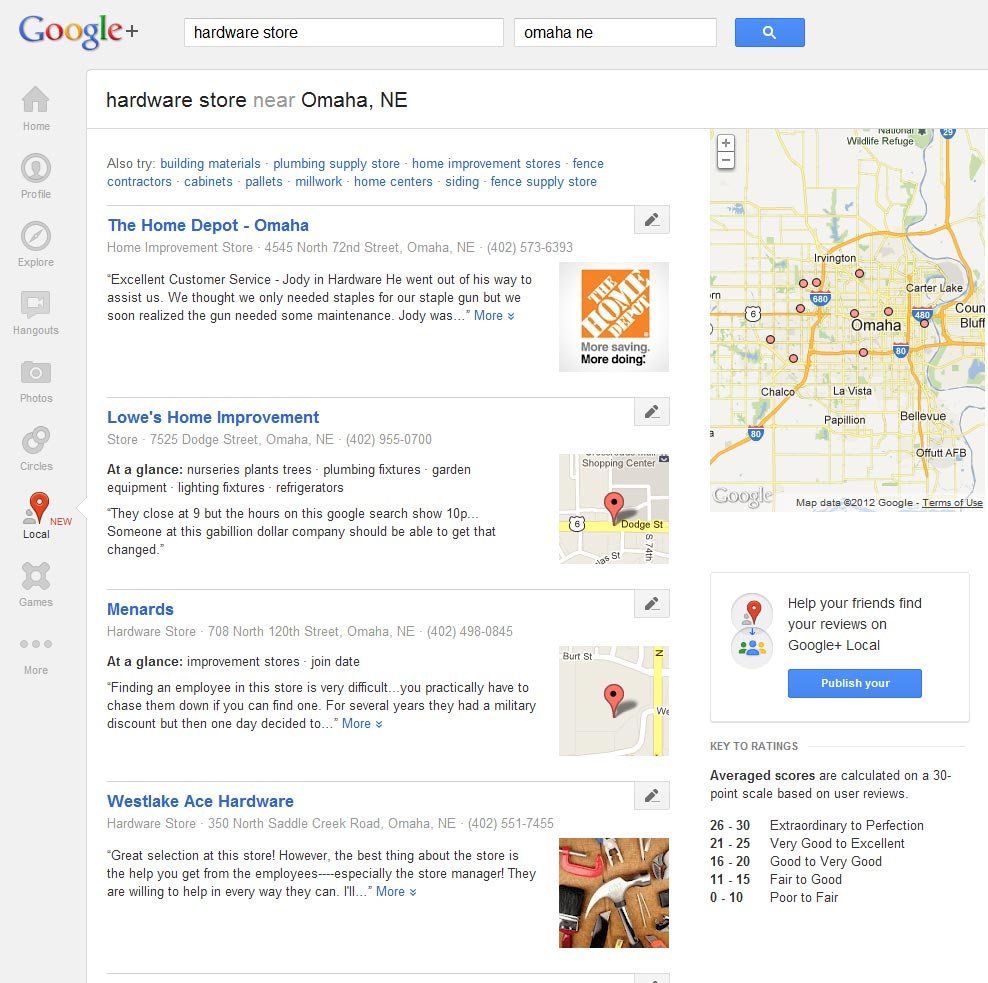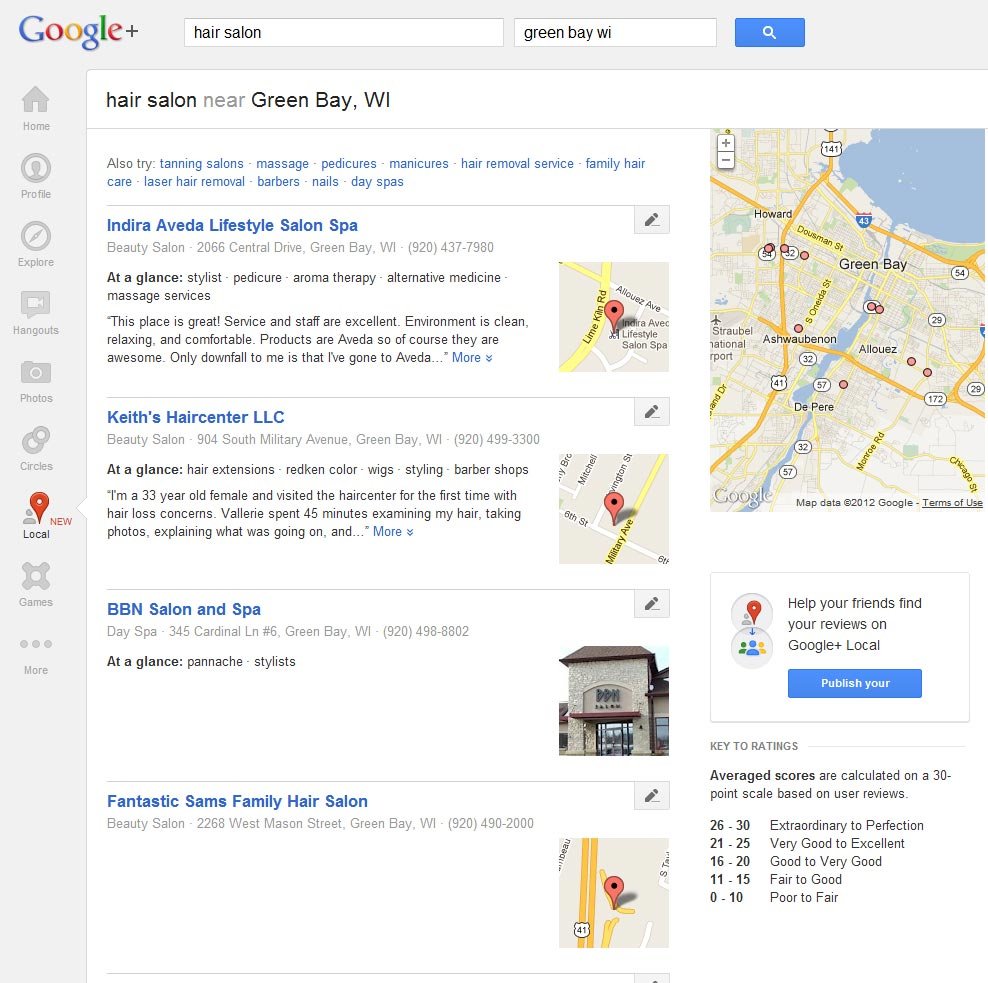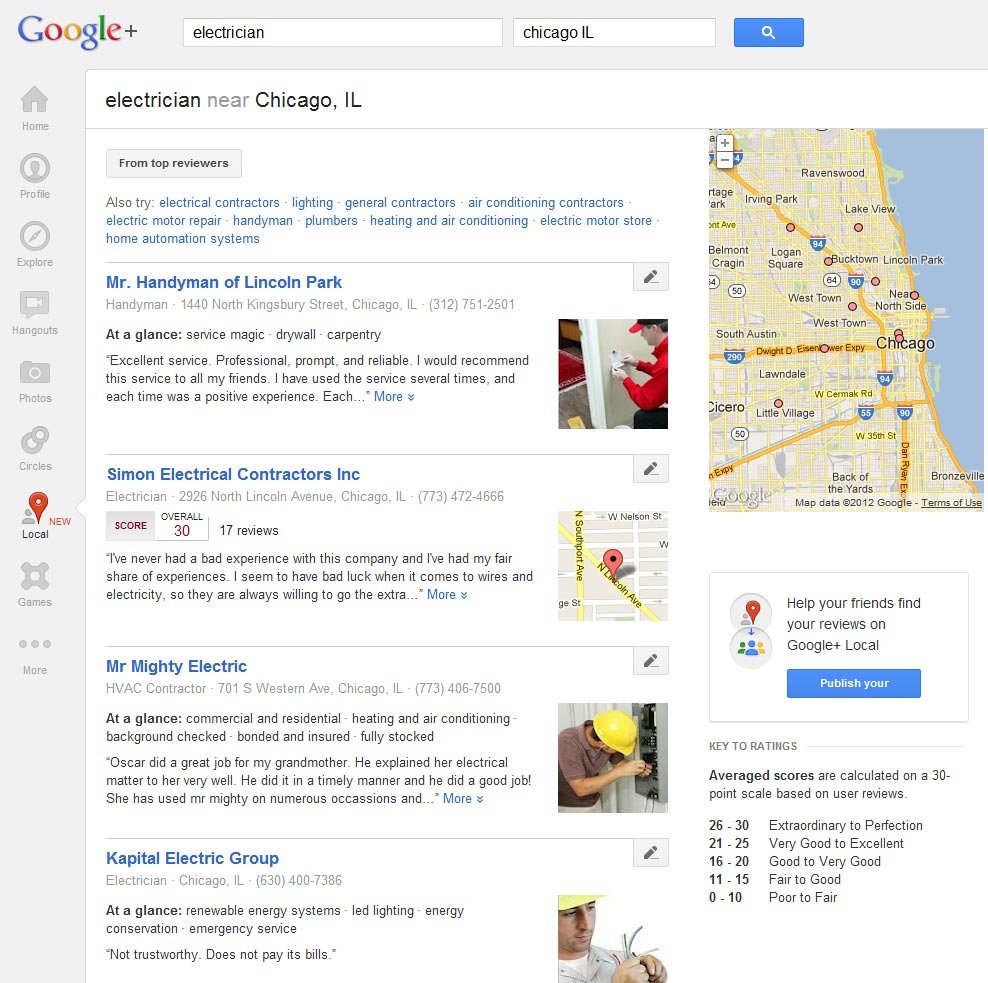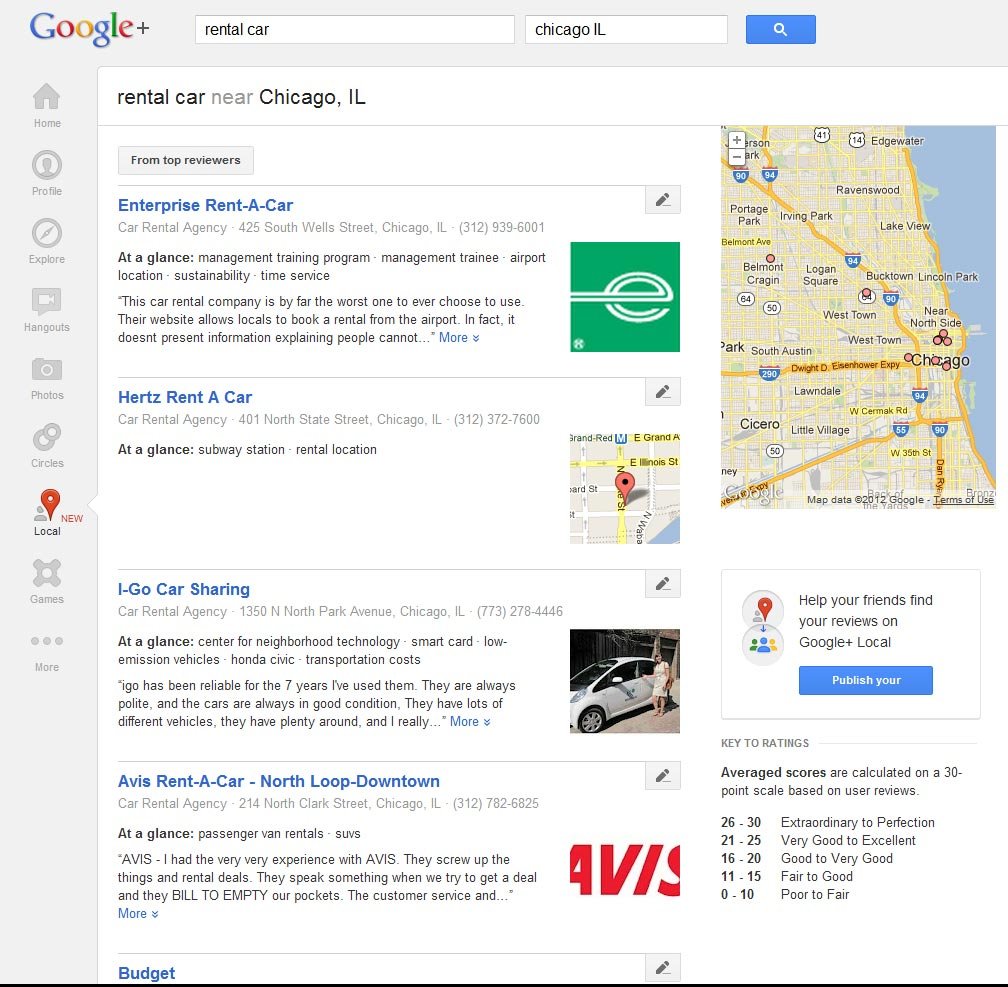Rankings On Google+ Local: Some Observations
Naturally, after a big interface update like the Places-Plus “merge” that just happened, the first question on everyone’s minds–from business owners to marketers–is “OK, so how do I rank in this thing?” While my advice has always been to focus only on rankings in the general sense rather than obsessing over a certain position for a certain keyword, I can understand the anxiety out there in the community that ranking in the general sense has indeed changed.
Lacking the bandwidth to do a full-scale quantitative study involving a crazy amount of page-scraping and geographic server proxying–a problem that very smart people have been trying to solve for years–I decided to see what I could see with a couple of representative searches in markets across the country just from my own computer. For the comparison, I followed the instructions laid out in the new +Local support pages:
I still haven’t seen the new Blended results that Greg Sterling highlights here on SEL so I started out trying some searches using the Place Search tab on Google and then moved over to Google Maps to see what matched up most closely.
Based on this very quick, unscientific research, Mike’s and my hypothesis that what happened this morning is largely an interface update appears to be confirmed:
In most cases, the +Local ranking algorithm appears to be nearly identical to that of maps.google.com with its zoom level set to 11.
I’d be interested to hear if this “conclusion” matches up with what you all are seeing across the country as well. My side-by-side screenshots follow below:
The Outliers
As I say in many of my presentations to fellow SEO professionals, the most interesting cases in any sort of competitive ranking analysis are the outliers. In my very quick research on this particular case, I did find a couple of exceptions to the zoom-level=11 rule. The first involved a handful of national-level rental car agencies for a search in Chicago; the second involved smaller-scale electrical contractors in the same market.
Neither Enterprise nor Hertz nor Avis nor Budget appears to have much of a Plus presence. But, hey, at least Avis is on Pinterest and Budget New Zealand has a Plus Page. Frankly, I can’t find a simple explanation of why Enterprise would jump from fourth to first on Plus. Theories are welcomed in the comments.
But, interestingly, the bigger jump by Mr. Handyman of Lincoln Park from seventh to first seems a little more readily explainable–not only does Mr. Handyman have a strong web presence, but its Places landing page URL is very clearly linked to its Plus Page right in the header. And I have to think that 26 followers on Plus for a small local service business like this one will blow its competition out of the water for quite awhile.
Implications for Current Blended results
Note that despite its prominence on Google+, Mr. Handyman doesn’t even appear in the Blended 7-pack on Google.com for “electrician Chicago IL.” This signals to me that for now, anyway, there are still only two main algorithms at play for Blended results on Google.com: organic and Places.
Keep in mind that these screenshots represent a moment in time, and that all the social activity that will now be happening around local businesses on Google+ will undoubtedly have SOME influence on Blended results soon. But for now, anyway, my recommendation would be to
Keep plowing full-speed ahead with your traditional Local SEO campaigns just as before
Make sure that you claim both your Plus and Place pages
Get your Plus page linked persistently from your website (much like your NAP info)
Get a small amount of Google+ activity going immediately
Message all existing customers with an @gmail.com address that you’re on Plus & you’d appreciate a follow
Feather in some additional Google+ activity over time
Do not, however, run around like Chicken Little because of this latest interface update. Yes, our jobs as SEOs will continue to get harder but it doesn’t look like that’s the case just yet.


